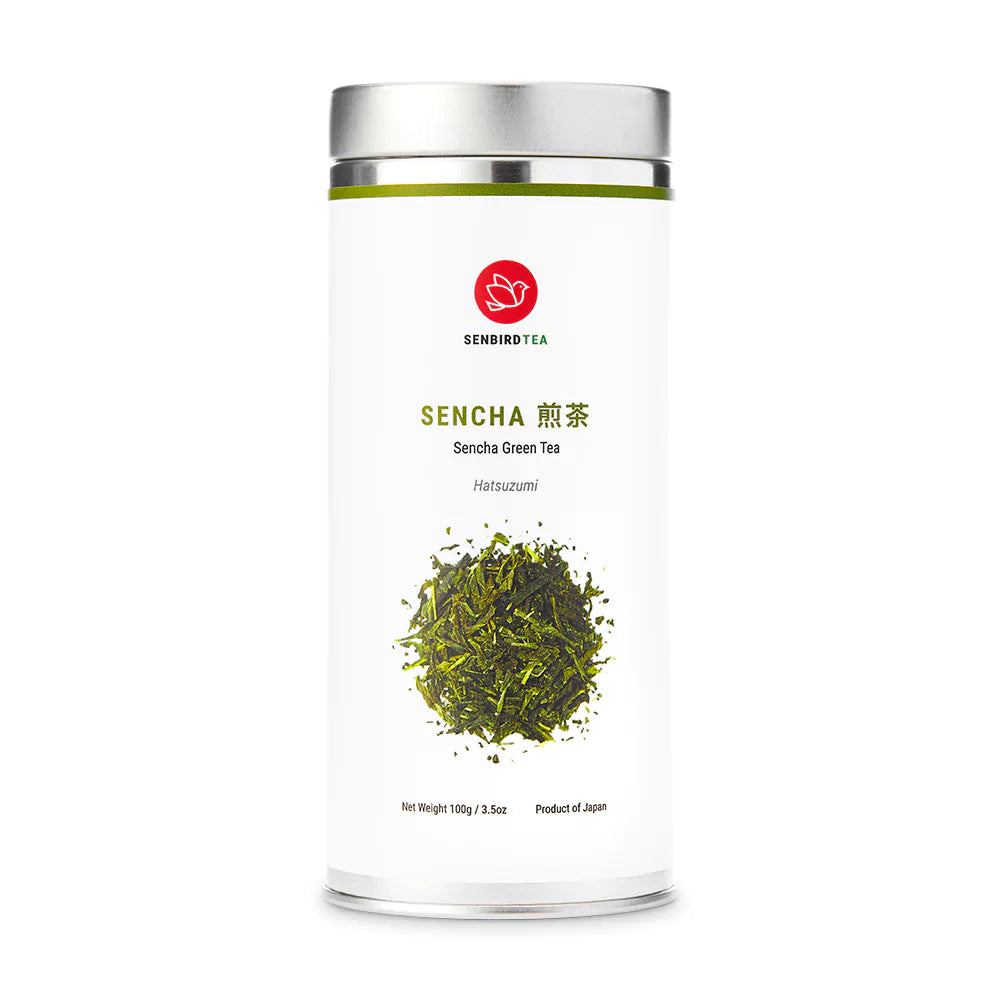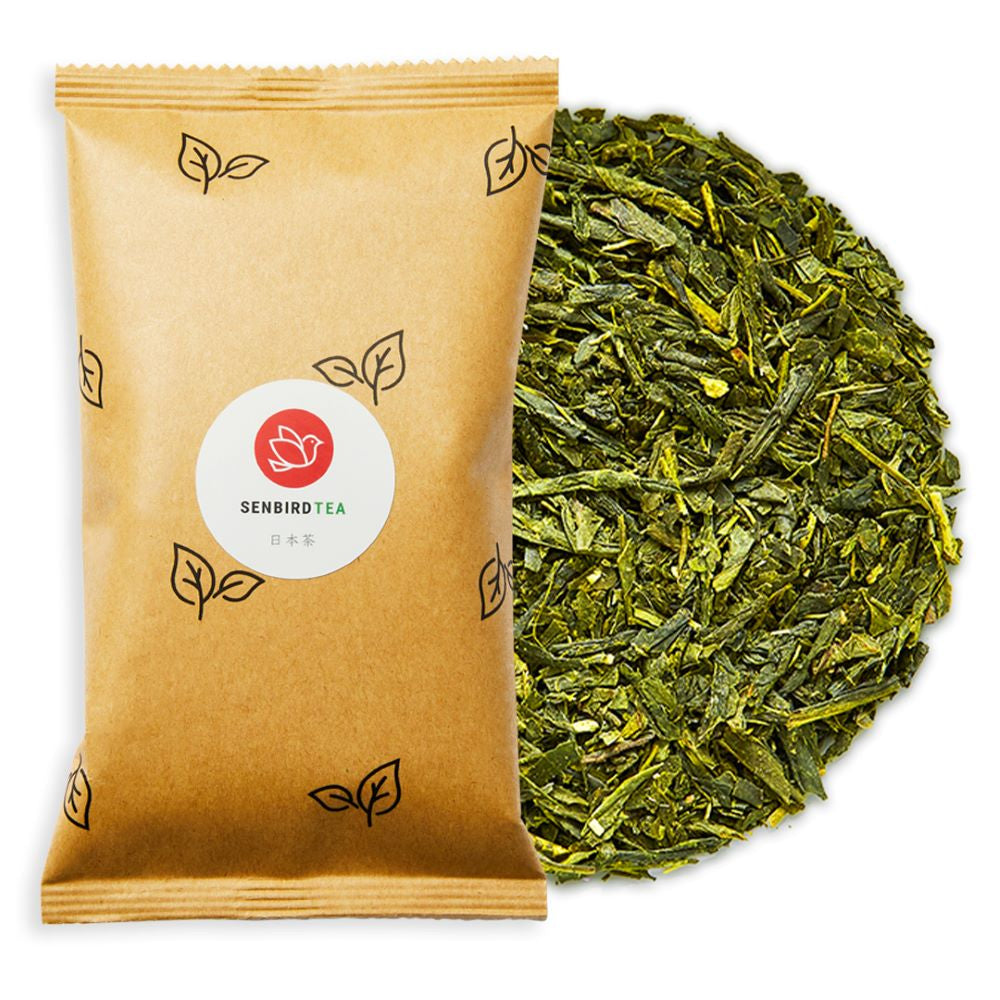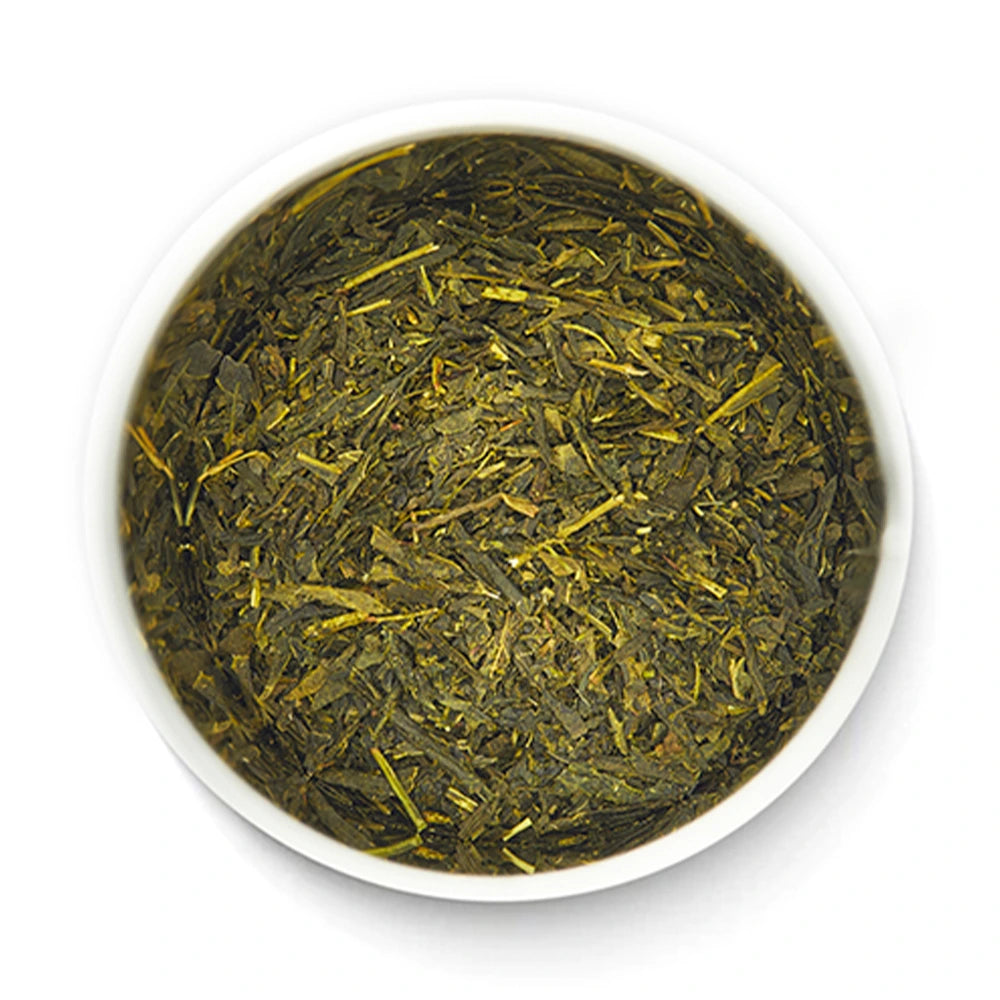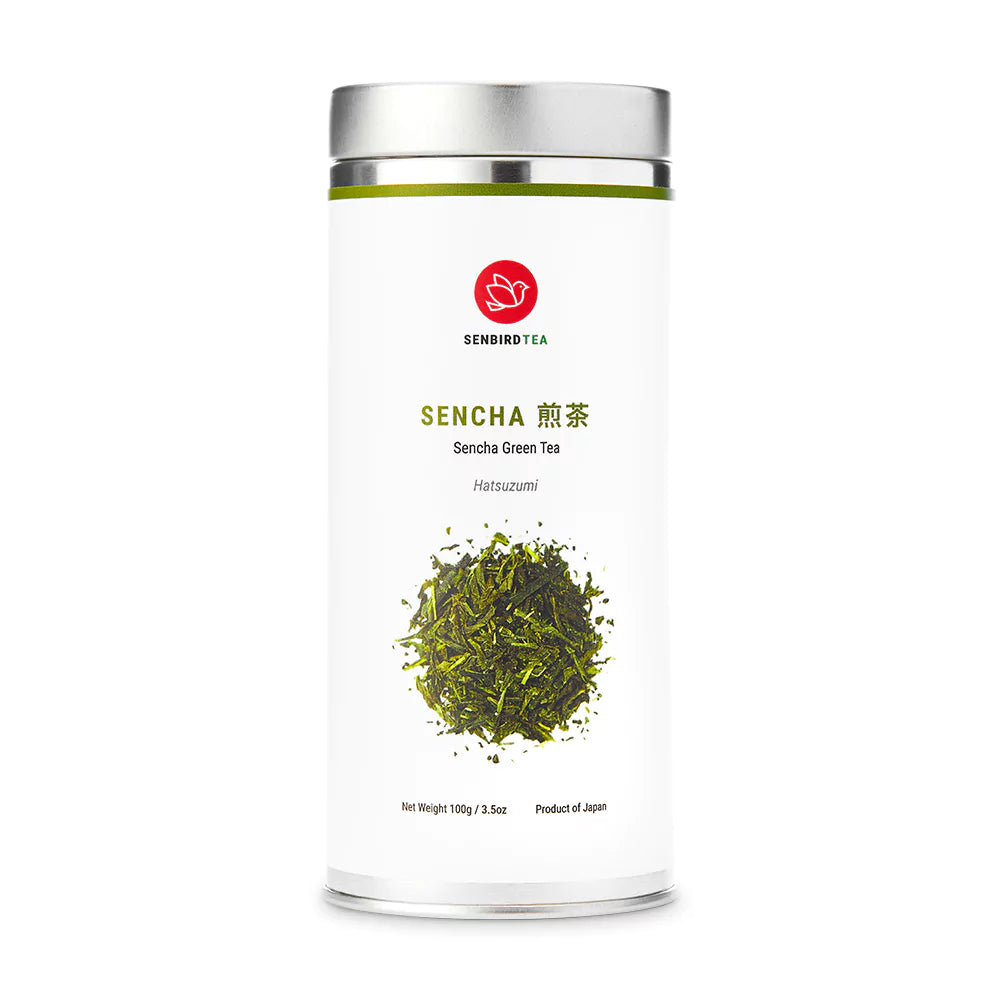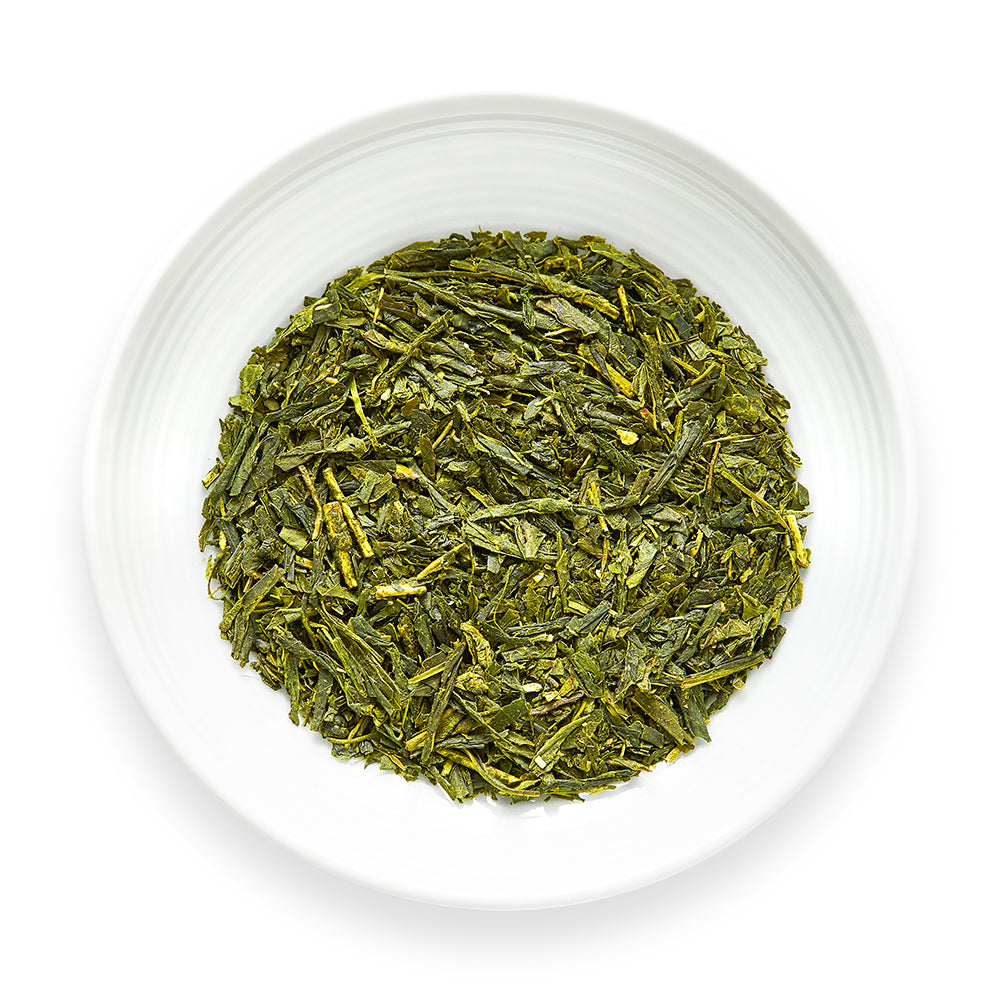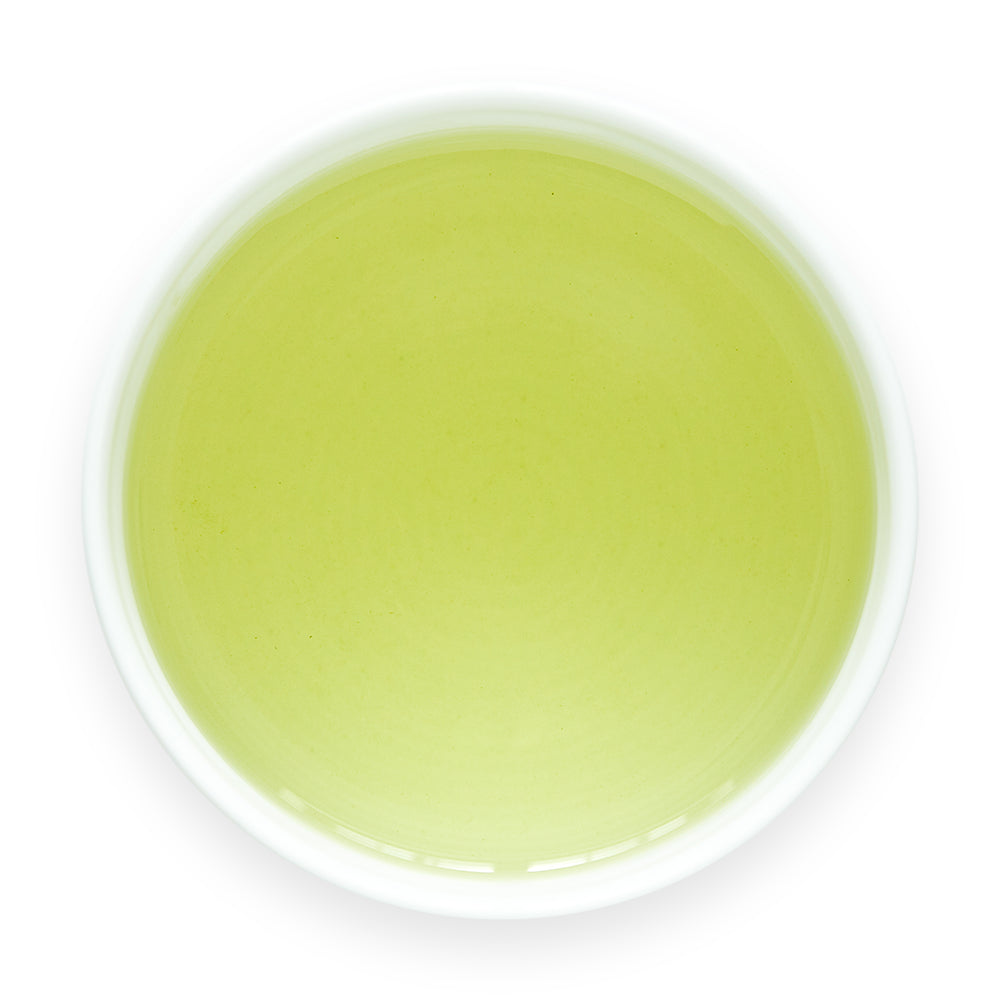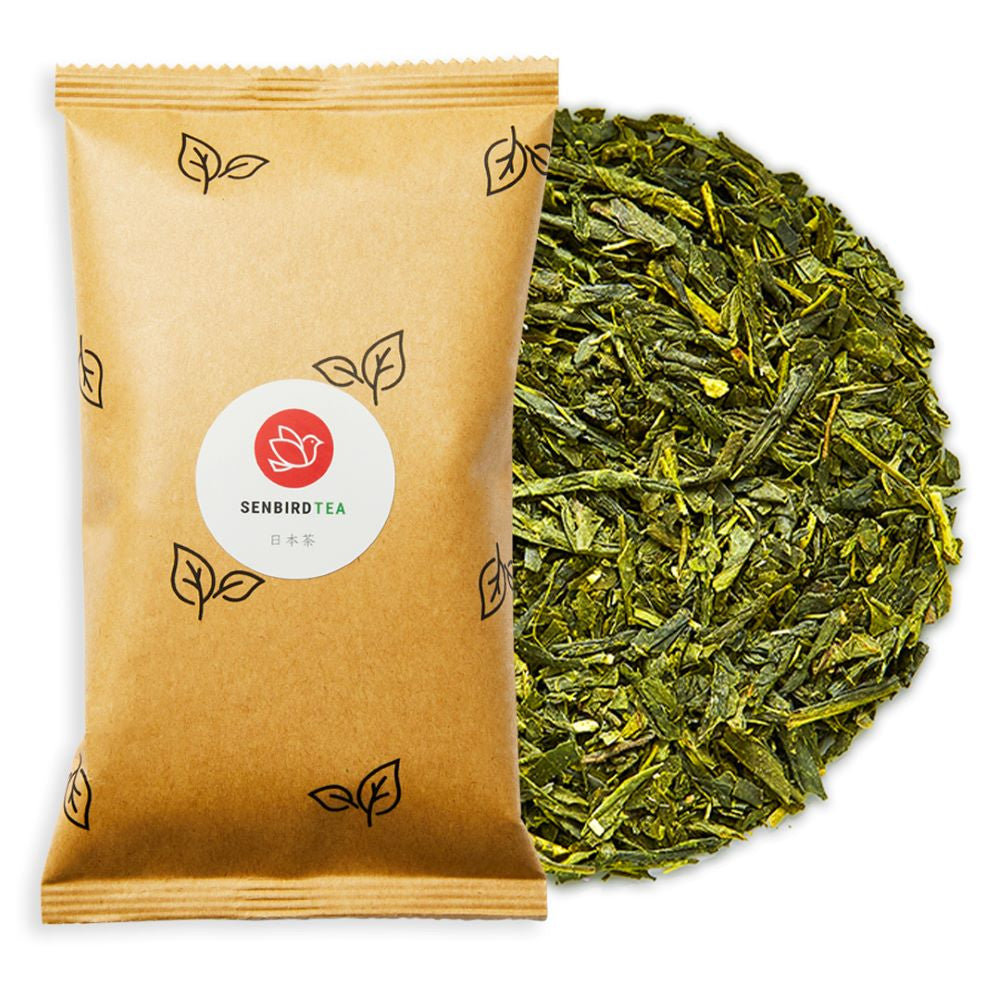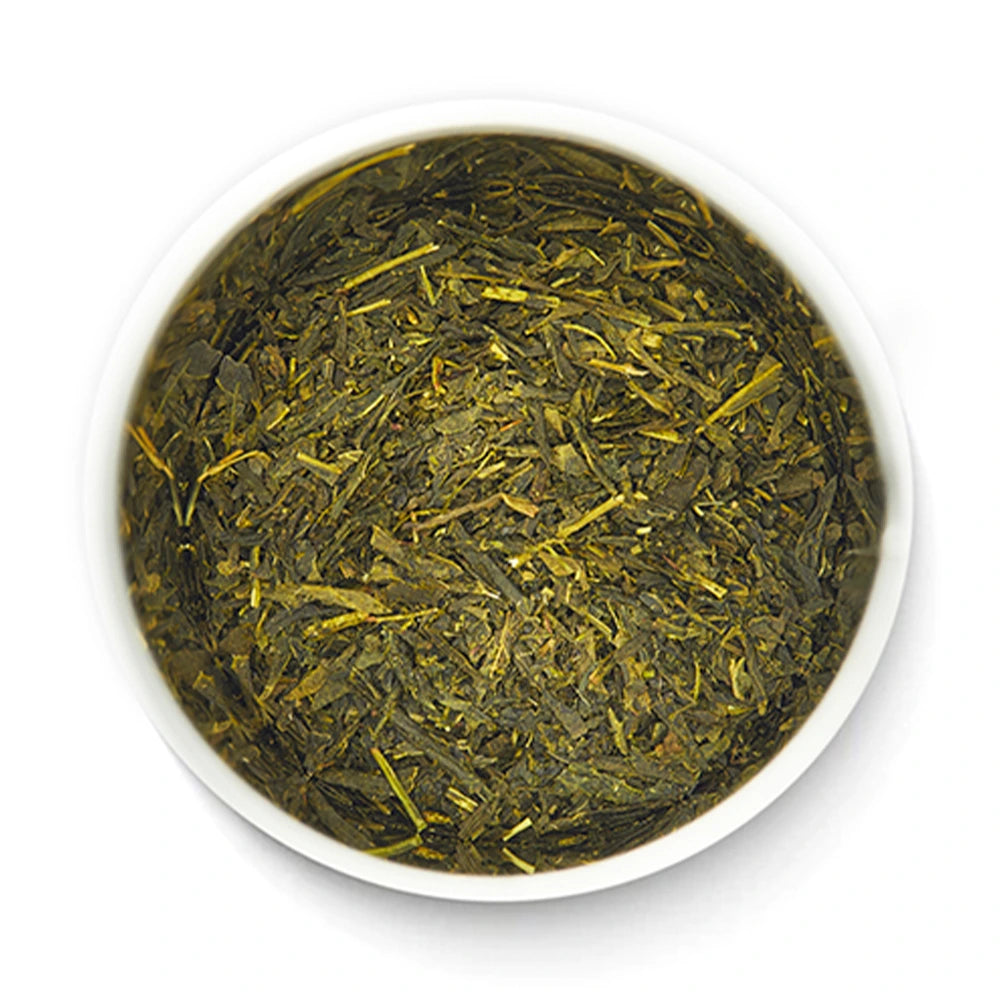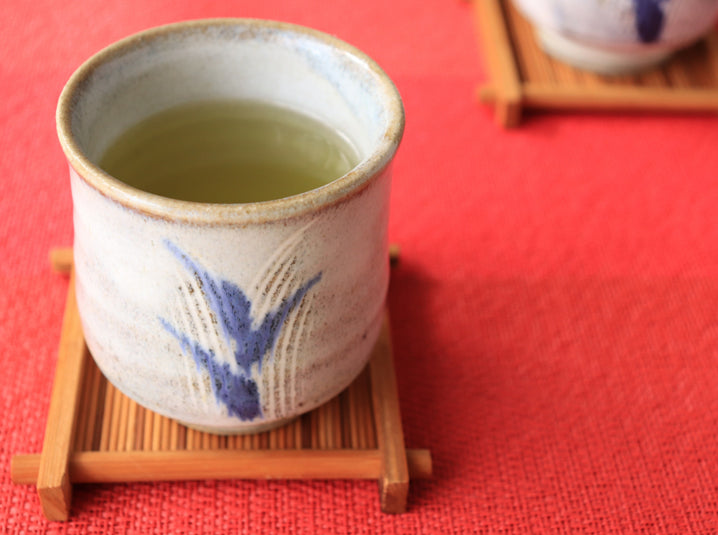
Japanese Sencha Green Tea Guide: Health Benefits, Types, And How To Brew
Welcome to our comprehensive guide to Japanese green tea where we explore the benefits of Sencha! As the most popular green tea in Japan, sencha makes up approximately 80% of the country’s total tea production. In fact, Japanese green tea is one of the most popular teas widely enjoyed worldwide. This versatile tea offers a refreshing, grassy flavor with abundant health benefits and is enjoyed by tea lovers worldwide.
Unlike flavored tea blends that use sencha as a base, high-quality sencha green tea has a naturally sweet, umami-rich, and slightly astringent taste when properly brewed. The best sencha reflects the region where it's grown, the season of harvest, and how it’s processed.
With its invigorating aroma and smooth taste, sencha green tea is a wonderful daily tea that can be enjoyed hot or cold-brewed, especially in warmer months.
The information presented in this article is in no way intended as medical advice or as a substitute for medical treatment. You should always consult with your physician or other health care professional before adopting any treatment for a health problem.

What is Japanese Sencha Green Tea?
When picturing green tea, Japanese sencha tea is likely what comes to mind. Sencha is a steamed green tea with a bright greenish-golden color, typically served in palm-sized yunomi Japanese tea cups. In fact, this green tea is an everyday staple in homes, staffrooms, and restaurants in Japan.
Unlike Chinese green teas, which are often pan-fired, sencha green tea leaves are steamed immediately after harvesting, preserving their fresh, grassy aroma and vibrant green color. Aside from China, Japan produces a significant amount of green tea. Like most tea, producers make sencha from the leaves of the tea plant known as Camellia sinensis. This Japanese tea is a popular choice for enjoying hot, often served during or after meals.

Sencha Green Tea Benefits: Why Drink Sencha?
Drinking sencha green tea is more than just an enjoyable ritual—it also comes with numerous health benefits. Rich in antioxidants, vitamins, and minerals, sencha tea benefits overall wellness, metabolism, and immune health.
In Japan, sencha green tea is a daily staple in many homes. Green teas like genmaicha, hojicha, gyokuro, and matcha all have numerous studies that support a healthier, longer life expectancy and improved life quality.
Top Sencha Green Tea Benefits
- Packed with Antioxidants – Sencha contains catechins like EGCG, which help combat oxidative stress, promote cellular health, and reduce inflammation.
- Supports Heart Health – Studies suggest that regular consumption of sencha tea may help reduce LDL (bad) cholesterol and improve blood circulation.
- Boosts Metabolism & Aids in Weight Management – The natural caffeine and EGCG in sencha support fat oxidation and calorie burning.
- Enhances Focus & Reduces Stress – The combination of L-theanine and caffeine in sencha promotes alertness, relaxation, and mental clarity without the jitters of coffee.
- Supports Digestion & Gut Health – Drinking sencha green tea after meals aids digestion, soothes bloating, and supports gut health.
- Promotes Oral Health – The antibacterial properties of sencha help prevent cavities, reduce bad breath, and protect gums.
- Strengthens the Immune System – Sencha is rich in vitamin C and polyphenols, which support immune function and help the body fight infections.
With so many sencha tea benefits, it's no wonder this tea is a daily staple in Japan and enjoyed by tea drinkers worldwide.
Japanese Sencha Green Tea: Flavor Profile
The flavor of sencha green tea varies depending on harvest time, steaming process, and production methods. However, most sencha teas share a fresh, vegetal taste with subtle sweetness and umami.
Typical tasting notes of sencha green tea include:
- Grassy & fresh – A crisp, refreshing green flavor
- Umami-rich – A savory depth, especially in high-quality sencha
- Slightly astringent – A gentle, pleasant sharpness
- Vegetal – Notes of spinach, kale, and brussels sprouts
- Mildly sweet – Some sencha has hints of kiwi, melon, or butternut squash
Color & Clarity:
- Light-steamed sencha (Asamushi) → Clear, pale green liquor
- Medium-steamed sencha (Chuumushi) → Balanced green color, moderate body
- Deep-steamed sencha (Fukamushi) → Vibrant, deep emerald green, richer texture

What Affects the Quality & Flavor of Sencha?
Japanese Sencha is the most versatile type of tea. It can range from delicate to stronger flavor, with or without astringency, and offers a range of aftertastes. The most well-known and common type of sencha comes from the Yabukita cultivar. A cultivar is a plant variety produced in cultivation by selective breeding.
The following influences the flavor and quality of sencha: production region, harvest season, processing, steam time, cultivar, and blend.
-
Region of Production
In Japan, the largest producers of sencha are Shizuoka, Kagoshima, Kyoto, and Mie, where the climate and soil create optimal conditions for high-quality tea leaves. -
Harvesting Season
The most prized sencha, known for its sweet, fresh taste and high nutrient content from the first harvest, known as shincha. At Senbird, our green tea collection is from the first harvest. The second and third harvests produce more astringent and bold green tea, but still full of sencha tea benefits. -
Steaming
The crucial step in making Japanese sencha green tea is steaming. Tea leaves are steamed immediately after harvesting in order to stop the oxidation process and maintain flavor, nutrients, and color. Sencha can be categorized into three primary types: chuumushi, asamushi, and fukamushi.- Asamushi (Light-steamed) – Delicate, floral, and clear green liquor
- Chuumushi (Medium-steamed) – Balanced umami and astringency
- Fukamushi (Deep-steamed) – Bold, rich, and full-bodied with fine tea particles.
-
Processing
Sencha typically has thin needle-like leaves from the rolling process, with deep-steamed sencha often broken into shorter and smaller leaves. In fact, sometimes you can even get unrefined or aracha tea. Aracha is blended in appearance and includes veins and stems that are eradicated in the final phase of processing before it is sold. Even though it has a less refined appearance, the flavor is delicious and refreshing, but a bit more raw and astringent. -
Cultivar
The most commonly used cultivar, or plant variety, to make sencha is Yabukita, which has a balanced umami and sweetness. Japan utilizes over 100 cultivars to make different teas and most of them are used to develop a wide variety of flavors for sencha. -
Blending
The final tea may include different cultivars blended to accomplish specific flavors, colors, and textures. Some producers sell single-origin teas only, while others blend different kinds until satisfied with the taste profile. There is no right or wrong blend or taste and enjoyment is based entirely on personal preferences. You should certainly try several different sencha greens teas to find the right one for you.

How to Brew Japanese Sencha Green Tea
To reap the most benefits from consuming green tea, focus your attention on the method of brewing. Follow the steps below to brew a delicious cup of Japanese green tea for a special moment in your cup:
Step 1: Choose the Right Teaware
Although any teapot will do, sencha is typically best brewed with a kyusu teapot and served in yunomi or small Japanese cups which hold 3 to 5 ounces of liquid. Using a kyusu ensures comfortable brewing of Japanese green tea, bringing out the rich, complex flavors of the tea leaves. Brewing with a kyusu teapot will enhance the flavor and aroma of your tea. The smaller yunomi cups allow for better sipping of the tea so you can compare the varying tasting notes from each steep.
Step 2: Use High-Quality Water
Water quality is important for brewing a delicious cup of Japanese sencha green tea. Filtered or spring water is best. Avoid hard water, as it affects taste. For a simple way to ensure water quality, we recommend using boiled water and then cooling down it to the desired temperature.
Step 3: Preheat Your Teapot & Cups
Preheating the teapots and cups, by pouring in hot water and allowing it to warm up the teaware, will allow the water to naturally cool and become the optimal temperature to steep sencha.
Step 4: Measure Your Tea Leaves
Use at least 5 grams of sencha tea per 7 oz (200ml) of water for a perfect balance of flavor. Empty the water from the cup or kettle (depending on what you followed in the previous suggestion). Using enough leaves is crucial for getting the right flavor. You may need to experiment to find the perfect brew for you.
Step 5: Brew at the Right Temperature, Rebrew, and Enjoy
The ideal water temperature for sencha is 158°F - 176°F (70°C - 80°C). Boiling water will burn the leaves and create bitterness.
Steeping Time Recommendations:
- 1st infusion: 45 - 90 seconds
- 2nd infusion: Hotter water, steep for 30 - 60 seconds
- 3rd infusion: Quick 30 - 60-second steep
Both steeping time and temperature influence the cup of tea you drink. We recommend trying hotter water and a shorter steep time for the second brew. Multiple steeps unlock different flavors, allowing you to experience the full depth of sencha green tea.

Sencha Tea Benefits In Your Daily Ritual
Sencha provides a wide range of aromas, textures, and flavors to tempt your senses. Whether you drink sencha green tea for its refreshing taste, cultural significance, or numerous health benefits, it’s a tea worth exploring.
By choosing high-quality sencha and mastering brewing techniques, you can fully enjoy its complex flavors while reaping the many sencha tea benefits. Now that you’ve learned all about Japanese sencha, which type are you most excited to try?
🍵 Drinking our tea? Snap a pic and tag us on Instagram at @senbirdtea or #senbirdtea. We’d love to see your moment with tea!
If you want to read more articles on sencha, check them out here:
- How to Brew the Perfect Cup of Sencha Green Tea
- Health Benefits of Sencha Japanese Green Tea
- Ochazuke Green Tea Over Rice Recipe
- How To Make Rice Seasoning (Furikake) With Used Green Tea Leaves
- Green Tea and its Uses in Traditional Chinese Medicine
Share your moment with us and stay connected on:

